The old graveyard
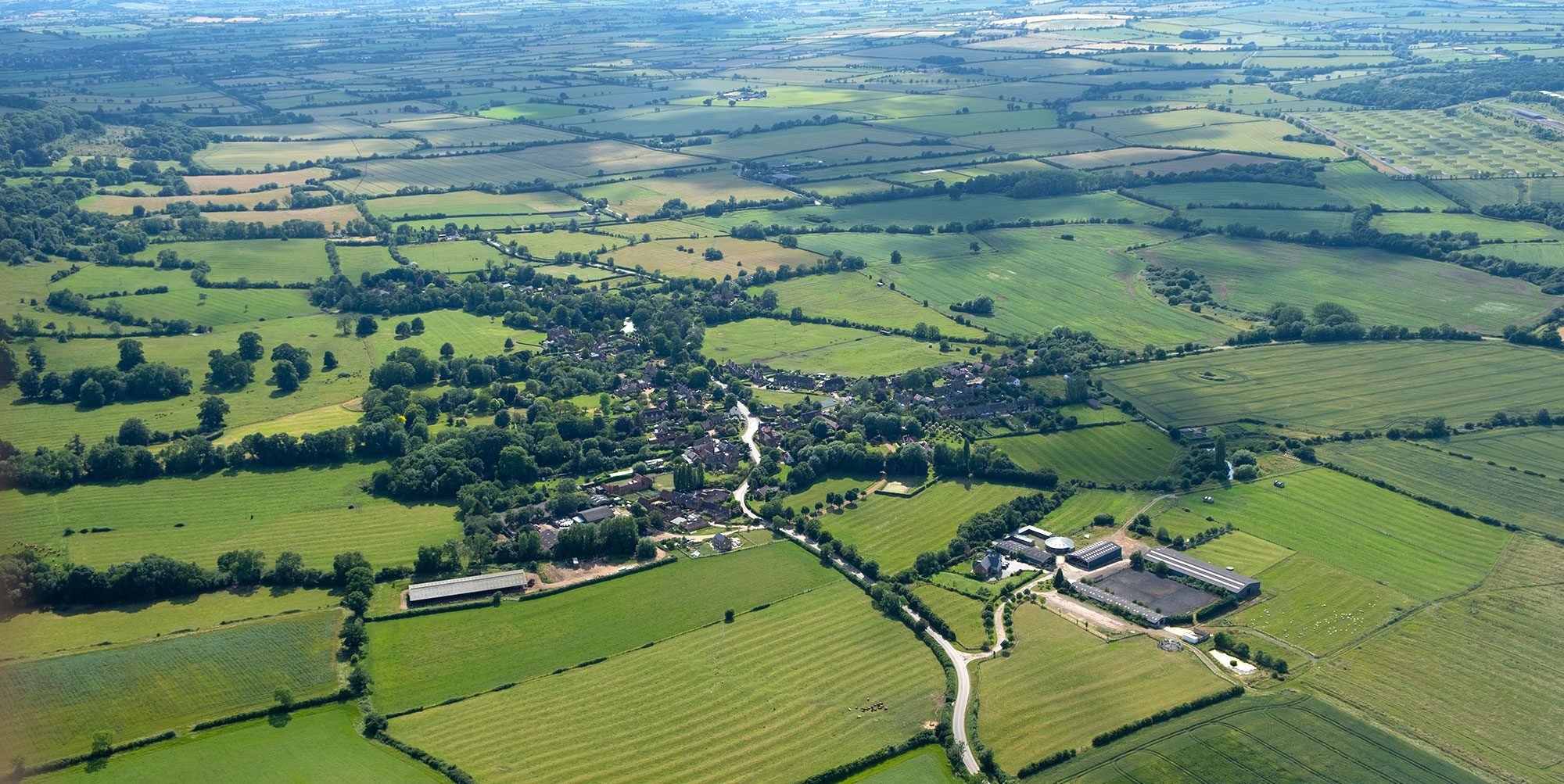
The old graveyard
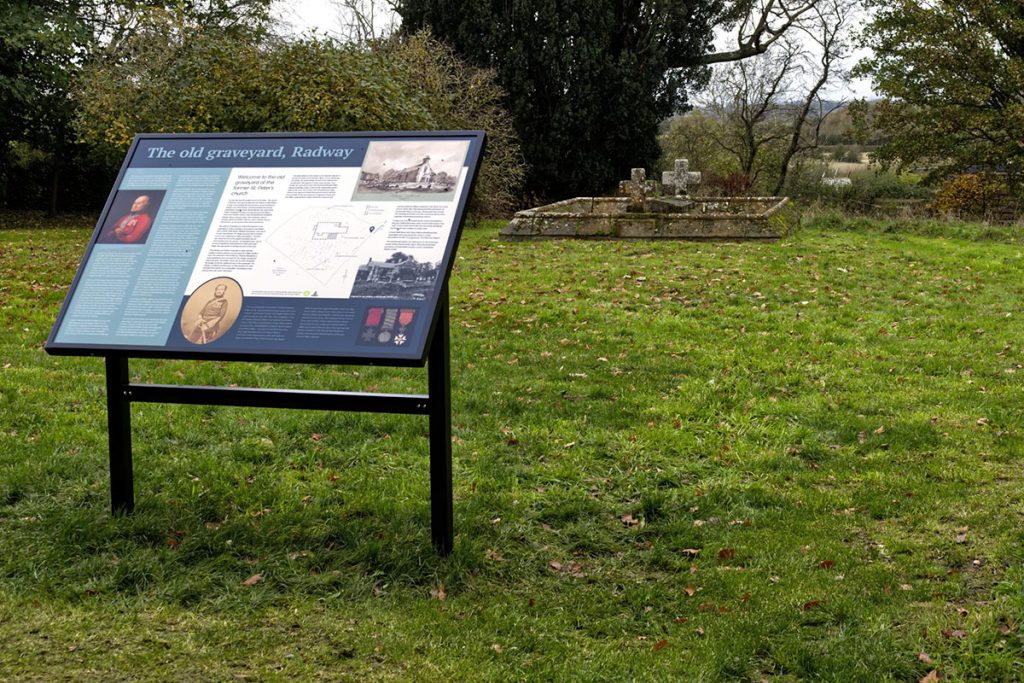
On this site was the small church of St Peter. The church of Radway was appropriated by the Abbey of Stoneleigh in 1291. Surrounding the church were many headstones, ledgers and chest tombs commemorating the people buried here. Captain Henry Kingsmill who was slain at the Battle of Edgehill in 1642 is buried here but his effigy is now in the present church. Early headstones for Elesabeth Eritage, died 4 January 1646, John Pettipher, died 27 October 1698 and William Palmer, died 7 March 1704 are still present, as are several other later headstones.
The church consisted of a nave and chancel. It was extended in 1739 to provide a new pew for the Millers with a burial vault below. William Shenstone, who saw it in 1750 commented “Tis neatly stucco’d, has a Cornish, and a cove-ceiling and is large and square”. The floor was raised almost to the pulpit and there was an arch-headed door for access. He thought it was “one of ye most magnificent and handsome Pews I ever saw”. Sadly, this description is all that remains of the pew.
The church was further extended in 1841 with the addition of three gables, incorporating the Miller family’s pew. The extension was funded by Charles Chambers, a local benefactor, who also paid for the village school and hall to be built. His ledger stone can be seen alongside the hedge on the far righthand side of the graveyard. The History Gazetteer and Directory of Warwickshire for 1850 recorded the church “as a neat edifice, consisting of nave, chancel and side aisles, with tower”.
The description of the church by Sir Stephen Glynne in his church notes of 26 October 1857 is not so flattering, recording “an uninteresting Church, much altered and modernised. The exterior is mean, long and low”. As a result, the vicar at the time, the Reverand George Miller desired building a new church in the fashionable gothic style of the time. The church was demolished in 1865 when it was agreed to build the present church. All that now remains of the old church is a fragment of wall and the Miller vault between which stood the chancel arch.
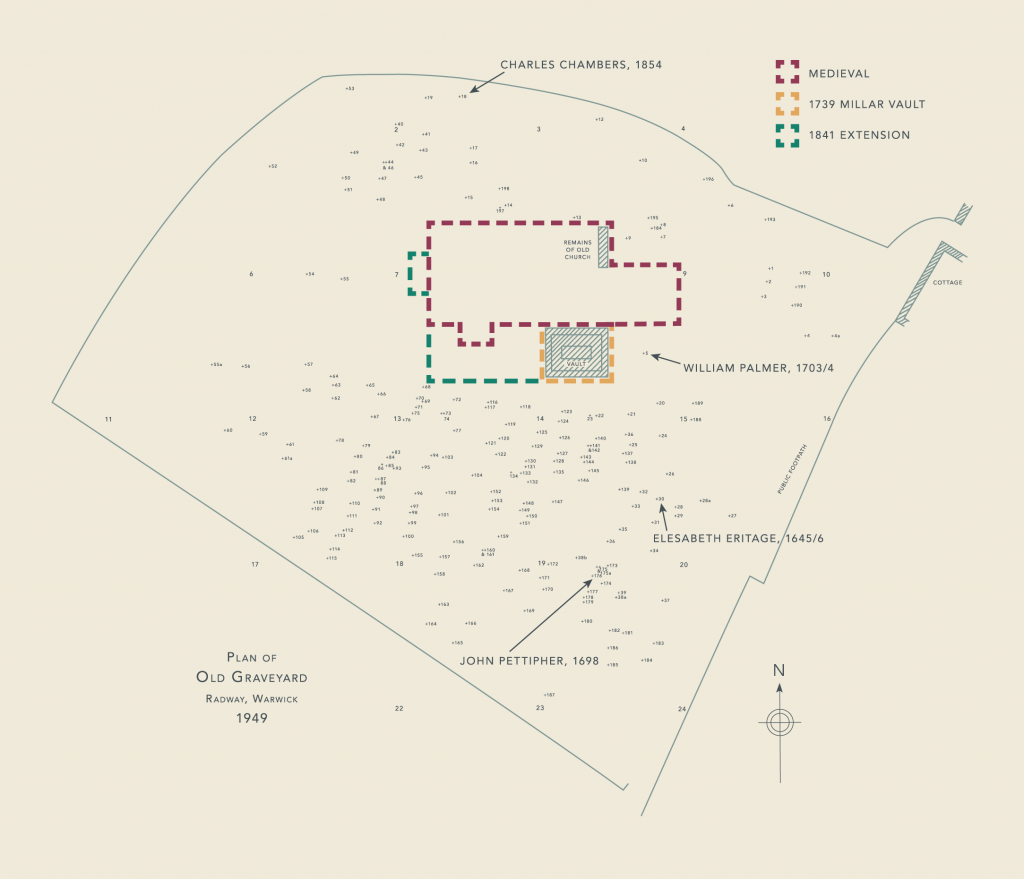
In 1949 over 220 memorial stones where recorded on this plan (above) before they were moved in the 1950s. The “wall” of memorial stones that you see today alongside the footpath was created at a later date.
In 2003 Neil Oliver and Tony Pollard established the orientation and east end of the church in their excavations for the TV programme ‘Two Men in a Trench’.
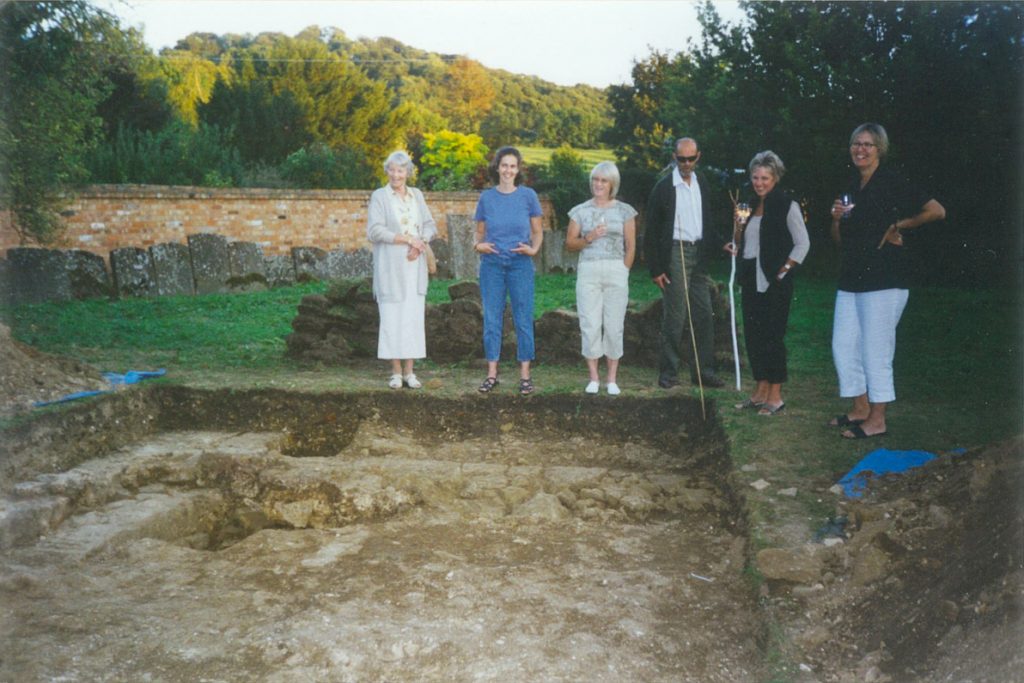
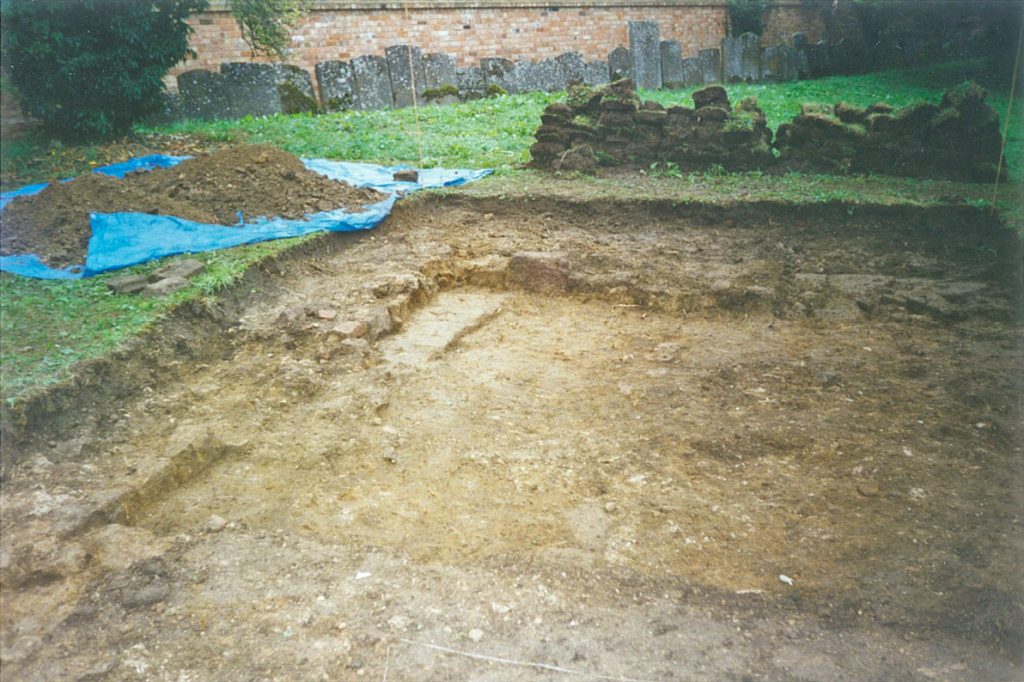
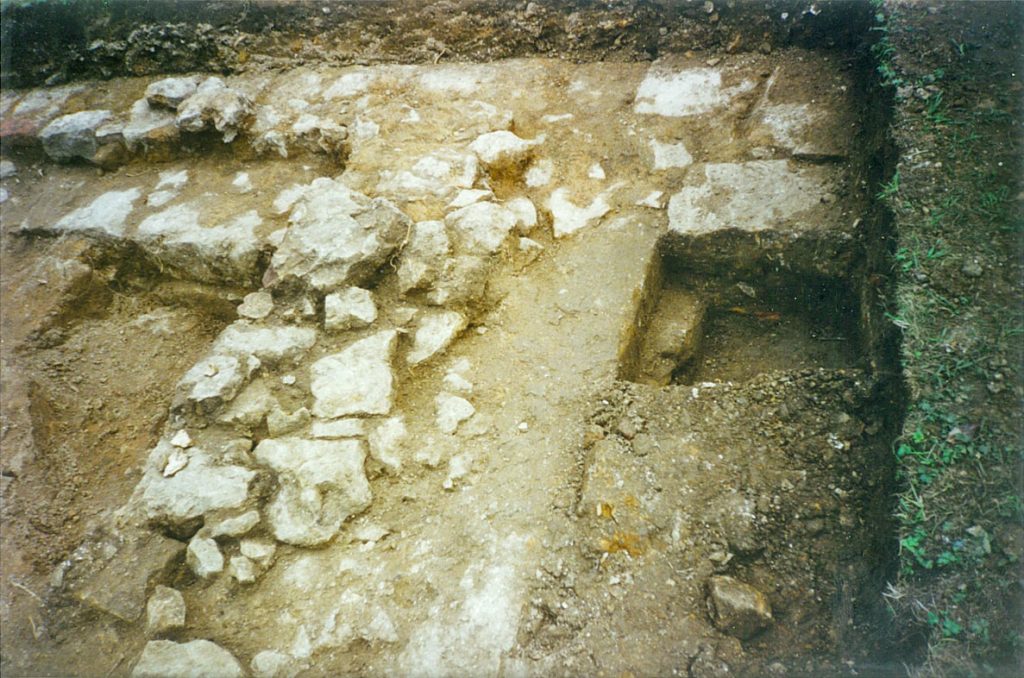
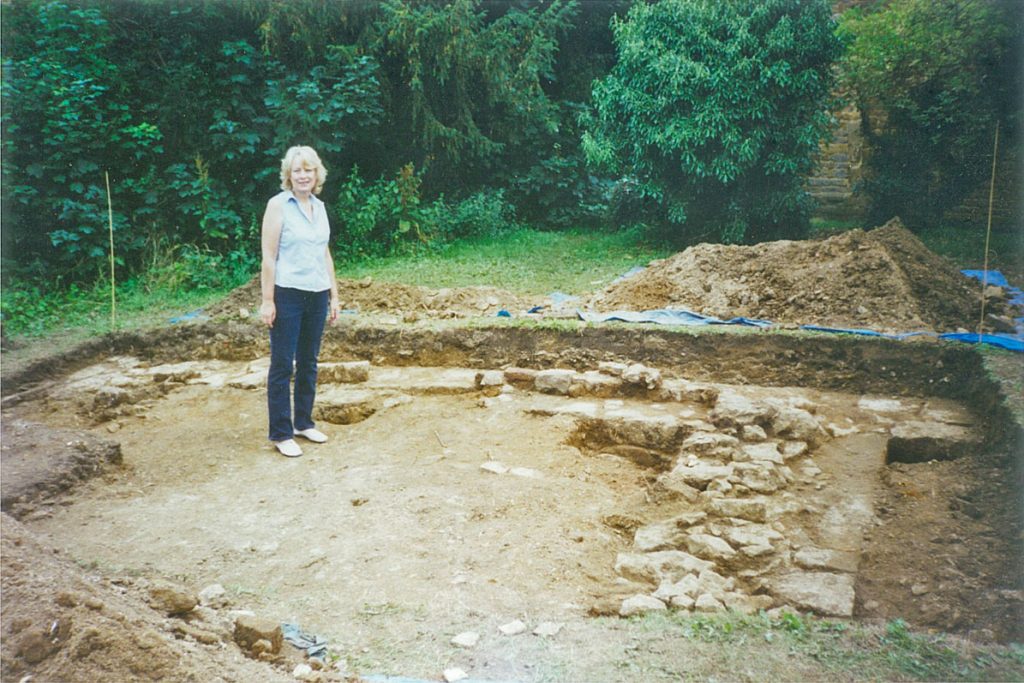
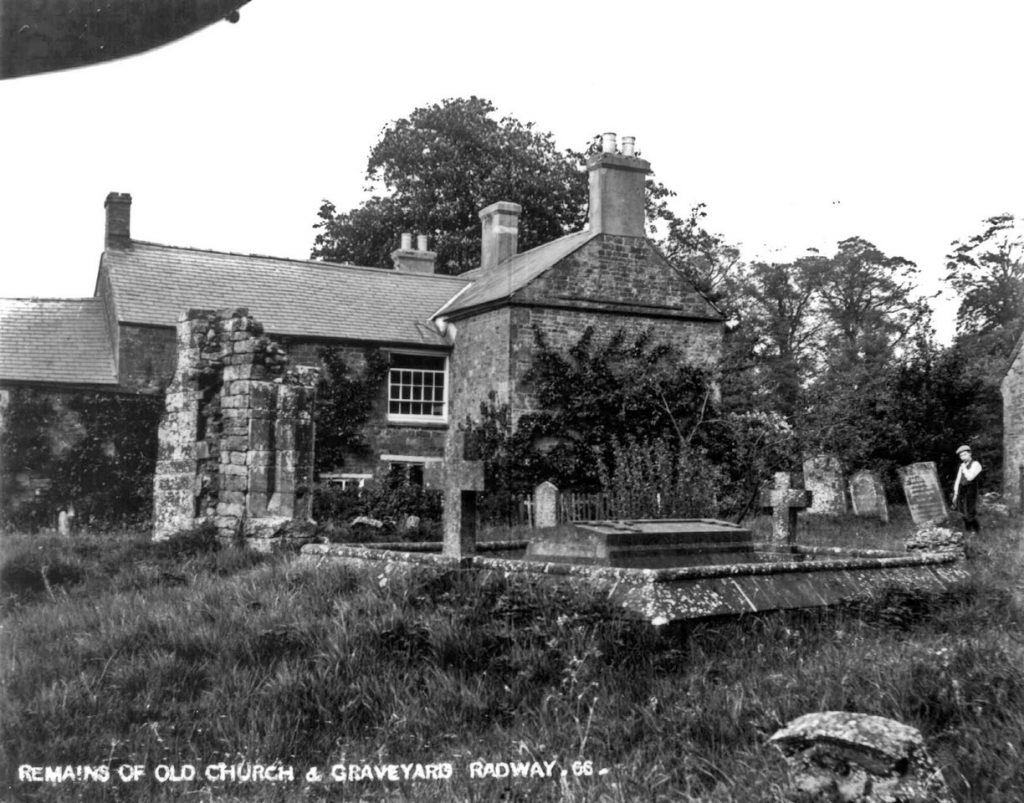
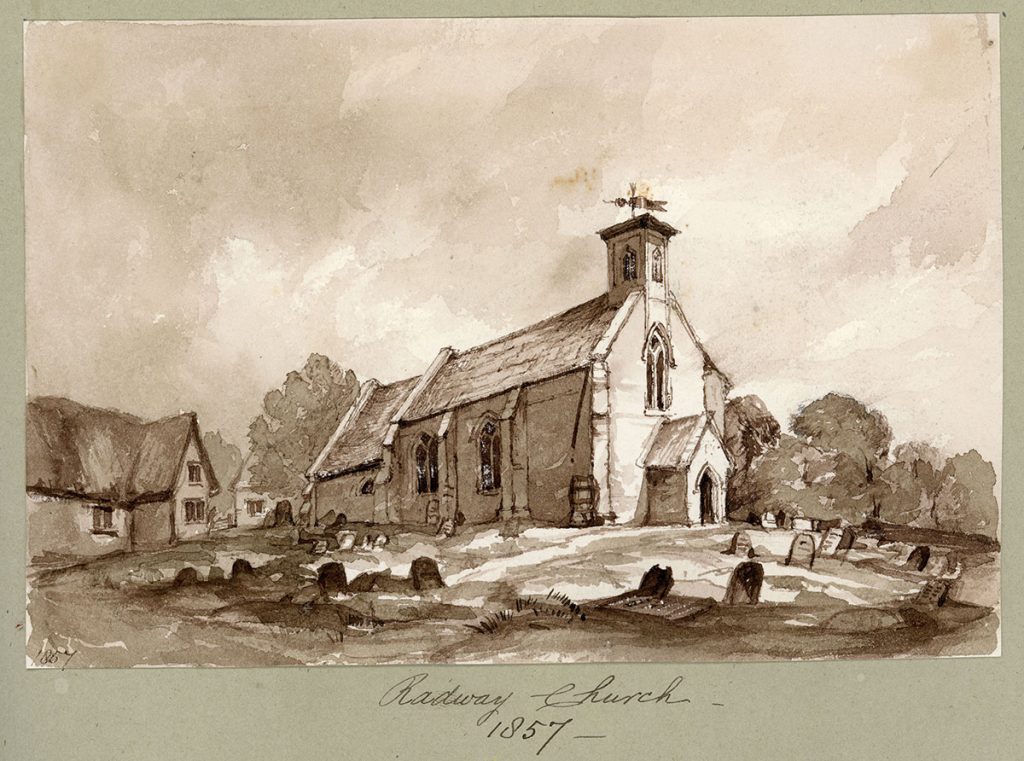
The most prominent feature remaining on the site of the old St Peter’s church is the Miller family vault, the memorial to the family who established Radway Grange in its current form. The vault was added to the original church when it was extended in 1739.
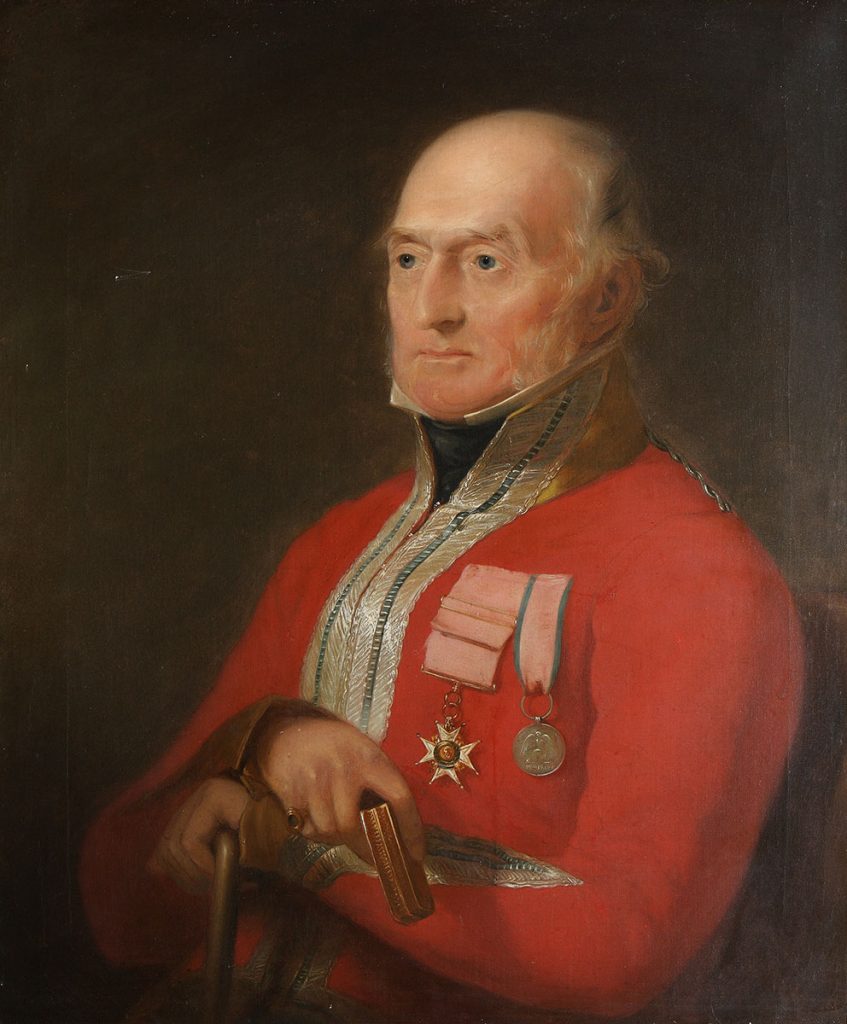
Lieutenant Colonel Fiennes Sanderson Miller CB JP DL (1783-1862) of the 6th (Inniskilling) Dragoon Guards and his wife, Georgiana Sibella Miller (1788-1858) are buried within the vault. He was the grandson of the architect Sanderson Miller and lived at The Grange, Radway. He survived the charge of the British Heavy Brigade at the Battle of Waterloo (18 June 1815) fighting alongside the famous Scots Greys. He went on to become a magistrate after his military service career ended.
Fiennes and Georgiana had seven children: three girls and four boys. Three of their sons (Fiennes, Philip and Frederick) followed their father, pursuing careers in the military and although buried elsewhere their lives are commemorated on the vault. Their other children are all buried in the present graveyard. The second eldest son, Reverand William Miller, inherited The Grange. The eldest daughter, Georgiana Sibella, married her cousin, Reverand George Miller who was vicar of Radway for over 50 years and resided at Ivy Lodge, Radway. The fifth child, Harriet Martha, married Reverand Hewett Carey and resided at The Cottage, Radway. The youngest daughter, Jane Anne, married Frederick Litchfield Ward and resided at Gunby Hall, Radway.
Captain Fiennes Sanderson Miller served in the 68th Regiment of the Bengal Native Infantry (Volunteers), a regiment of the British East India Company. He was married to Mary Anne Theresa de Castillo in 1849 at Meerut, India. During the Indian Mutiny/First War of Independence (1857-59) Captain Miller’s regiment mutinied at Bareilly on 31st May 1857. Whilst precise details of his death, aged 38, and place of burial are not known, Captain Miller’s name was recorded in St Paul’s Cathedral, Calcutta on a mural tablet linked to the Mutiny.
Captain Philip Miller was commissioned into the Royal Artillery from a Gentleman Cadet to Second Lieutenant on 7th May 1846. He was promoted to First Lieutenant on 16th November 1846 and to Second Captain on 17th February 1854. He died of fever at the age of 29 in Sri Lanka and was buried at Galle Face Burial Ground in Colombo. In 1920 the graves were reinterred at Kanatte (Borella) General Cemetery in Colombo.
A painted memorial window to Captain Philip Miller was erected in the chancel of the old St Peter’s church in 1856. The window represents the figures of St Peter and St Philip and can now be seen in the chancel of the present church, to the right of the altar.
Lieutenant Colonel Frederick Miller served in the Royal Artillery with particular distinction, most prominently during the Crimean War (1854-56). He was awarded the Victoria Cross, the highest British Military Award, for valour during the Battle of Inkerman (5th November 1854). The citation for the award of his VC states: ‘for having, at the battle of Inkermann, personally attacked three Russians, and with the gunners of his Division of the Battery, prevented the Russians from doing mischief to the guns which they had surrounded. Part of a Regiment of English infantry had previously retired through the Battery in front of this body of Russians.’
Letters to Frederick’s sister indicate that he died in Cape Town, South Africa from an unknown illness. A respected officer, newspaper obituaries reported a grand funeral prior to his burial in St Peter’s Cemetery, Cape Town. His remains were later reinterred in the Ossuary Garden of Remembrance after development to the original cemetery. A photograph of his burial gravestone exists in the Royal Artillery Archives displaying a cross and adorned by a stack of cannon balls near the foot, with the inscription “To the memory of L’Colonel F Miller VC Royal Artillery died 17th February 1874. This monument is erected by his comrades and friends.” Quoted by kind permission of the Royal Artillery Historical Trust.
As all Royal Artillery officers were required to be competent at cartography, this often led to amateur sketching. Several sketch books by Frederick exist. One, held by the Royal Artillery Museum, contains his sketches of the campaign, and another, held by Portsmouth City Council Museum Service, contains sketches of Warwickshire.
Until the discovery of the latter sketchbook by local researchers in 2020, the appearance of the original St Peter’s Church in Radway was uncertain. Lieutenant Colonel Miller’s sketch from 1857 (see image top right of panel) indicates the most accurate representation of the church’s exterior and orientation before its demolition in 1865.
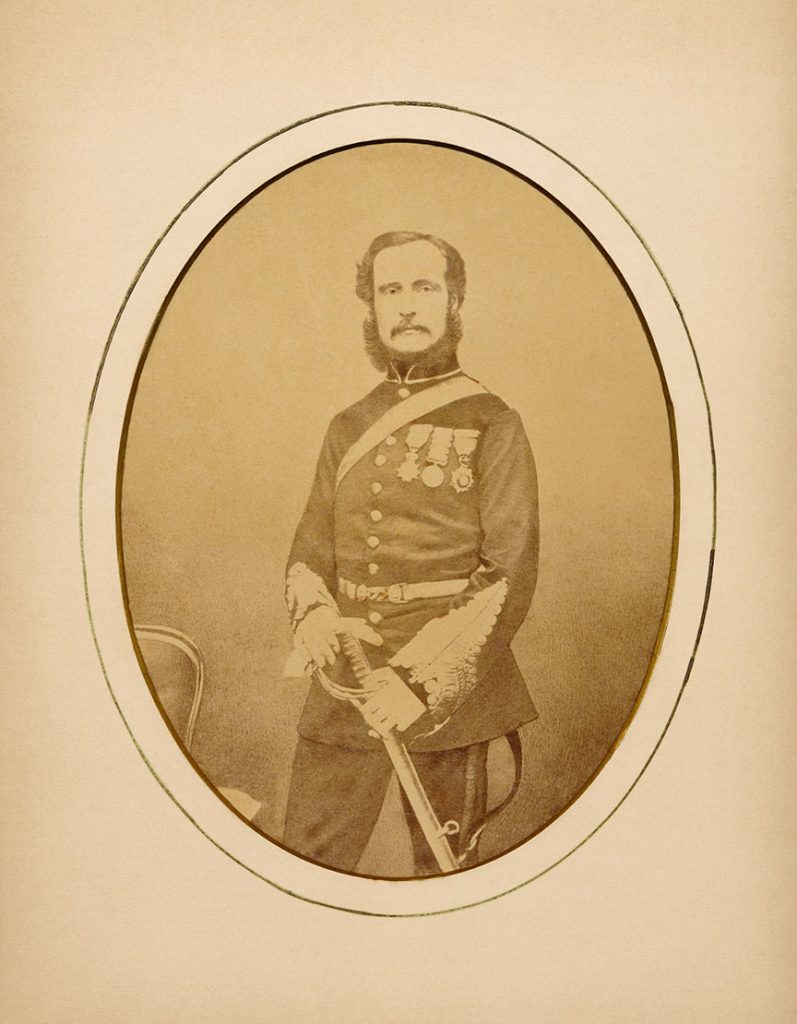
This is a photograph of Lieutenant Colonel Frederick Miller VC RA, (reproduced by kind permission of Mr. Clive Lampitt), wearing the Crimean War Medal, Knight of the Legion d’Honneur and the Order of the Medjidieh. In the photograph Frederick Miller is not wearing the Victoria Cross or the British Issue Turkish Crimean Medal, but he is wearing the cuff braiding for a Victorian Royal Artillery Field officer (Major – Colonel). It is therefore likely that this image was taken prior to Frederick Miller’s investiture of the Victoria Cross in the rank of Brevet Major and therefore likely dates between July/August 1856 (award of the Legion d’Honneur) and June 1859 (award of the Victoria Cross). In his letters it was stated that his medals, including the Victoria Cross, should be sent home to his family. This suggests that the Victoria Cross and his other medals were with him in South Africa when he died. Lieutenant Colonel Frederick Miller’s surviving medals are now in the Lord Ashcroft Medal Collection in The Imperial War Museum in London.
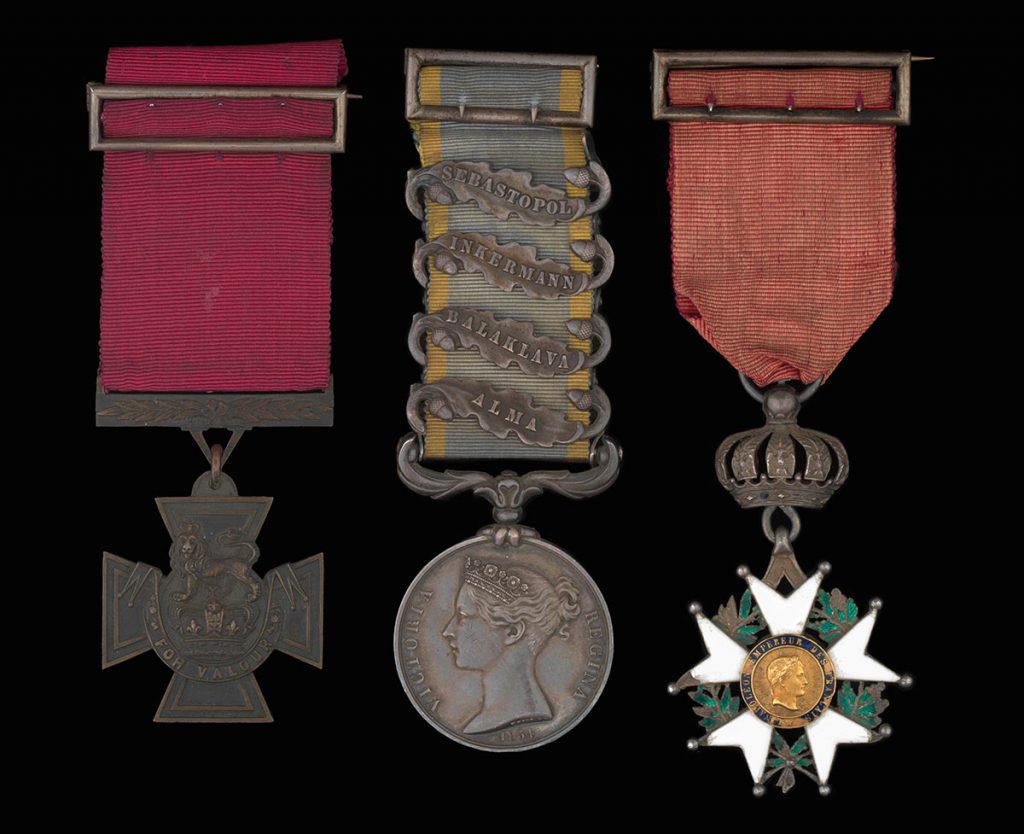
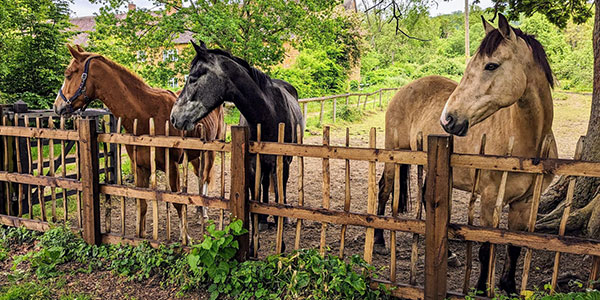

Latest minutes & agendas
Latest Notices
- Join our Voice of Warwickshire panelJoin our new Voice of Warwickshire residents’ panel and get ready to share YOUR views!
- Mobile Library timetable 2024/25Please find attached a new copy of the 2024/25 timetable for the mobile library.
- Warwickshire Fire & Rescue ServiceWe carry out a free and valuable service that you and your parishioners may not know about. This service is called a ‘Safe and Well Check’.


